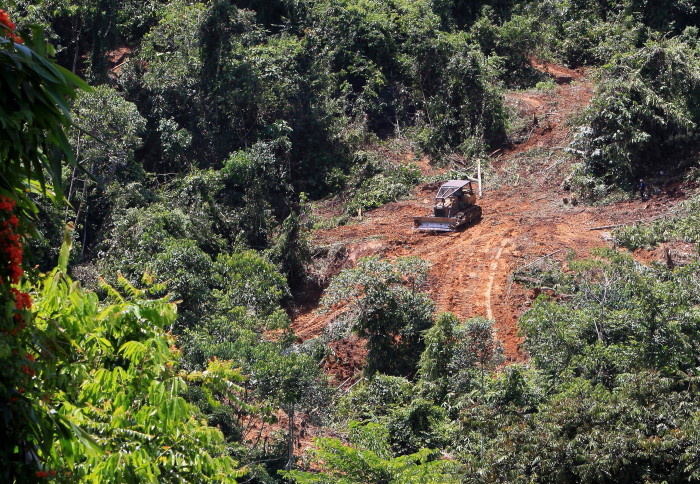Study shows logged tropical forests are surprisingly vibrant and need protection

Credit: Zoe G Davies
Researchers find tropical forests that have been logged still retain good ecological health, and should be protected from conversion to plantations.
Logged forests that have had some trees removed are often labelled as ‘degraded’, meaning they are lower priority for protection and can be cleared to make way for agriculture such as oil palm plantations. The new study, led by the University of Oxford and including Imperial researchers, challenges this idea.
Logging affects many of the world’s tropical forests, and such forests are often considered degraded because they have lost vegetation structure, biomass and carbon stocks. But there has rarely been analysis of whether the ecological health and functionality of these ecosystems are similarly degraded.
The new study, published today in Nature, finds that logged rainforests are treasure-troves of healthy ecological function and should not be written off for oil palm plantations.
Not everything that looks broken, is broken
The research focused on ecosystem energetics: the cascade of energy from plants to mammals and birds through the food they consume. The research team combined more than 36,000 tree, root, and canopy measurements with population data on 248 animal species from old-growth forests, logged forests, and oil palm plantations in Borneo.
This study shows how meticulous and joined-up research across a wide range of species can yield surprising and important new insights. Professor Rob Ewers
They found that the ecological energy flow through the logged forest was 2.5 times greater than in the old-growth forest, before collapsing in the oil palm plantations. The logged forest supported similar or greater densities of almost all bird and mammal species as the old-growth forest.
Lead author Professor Yadvinder Malhi, from the Environmental Change Institute at the University of Oxford, said: “We were very surprised by how much more energy was flowing through the logged forests compared to the old-growth forest, and that it was flowing through the same diverse range of species found in the old-growth forest. We had not expected the logged forest to be so ecologically vibrant.”
The authors emphasise that old-growth forests still hold immense ecological value and high carbon stocks, and need to be left intact where possible. Professor Malhi added: “In tropical forests, and probably in many other ecosystems, not everything that looks broken, is broken.”
Years of detailed fieldwork
The study required meticulous counting of almost all bird and mammal species in the remote study sites, as well as measuring the growth rates of trees and their leaves and roots. Trail cameras and cage traps over 77,000 combined nights provided information on more secretive and elusive mammals, including tree shrews, sun bears and elephants.
Co-author Professor Robert Ewers, from the Department of Life Sciences at Imperial, said: “Ecologists often just study one aspect of an ecosystem, like its trees or its birds. This study shows how meticulous and joined-up research across a wide range of species can yield surprising and important new insights into the nature of ecosystems in a human-dominated world.”
Co-author Dr Terhi Riutta, from the University of Exeter, added: “This work would not have been possible without the many years of detailed fieldwork by our partners and research assistants in Malaysia, often in very tough conditions.”
-
‘Logged tropical forests have amplified and diverse ecosystem energetics,’ by Yadvinder Malhi et al. is published in Nature.
Based on a press release by the University of Oxford.
Article text (excluding photos or graphics) © Imperial College London.
Photos and graphics subject to third party copyright used with permission or © Imperial College London.
Reporter
Hayley Dunning
Communications Division